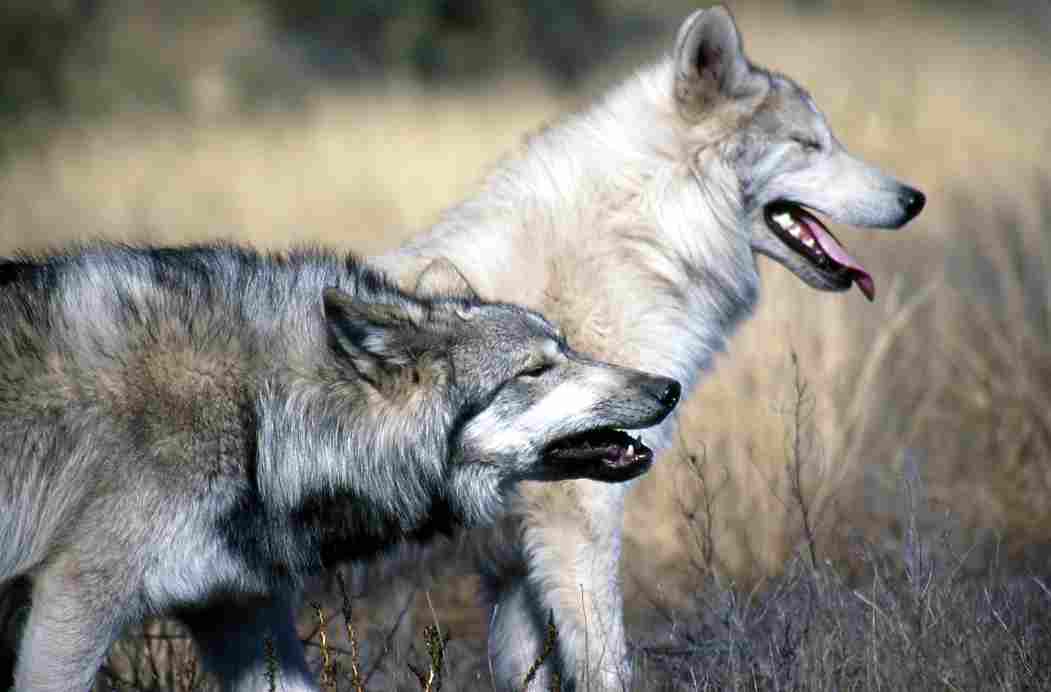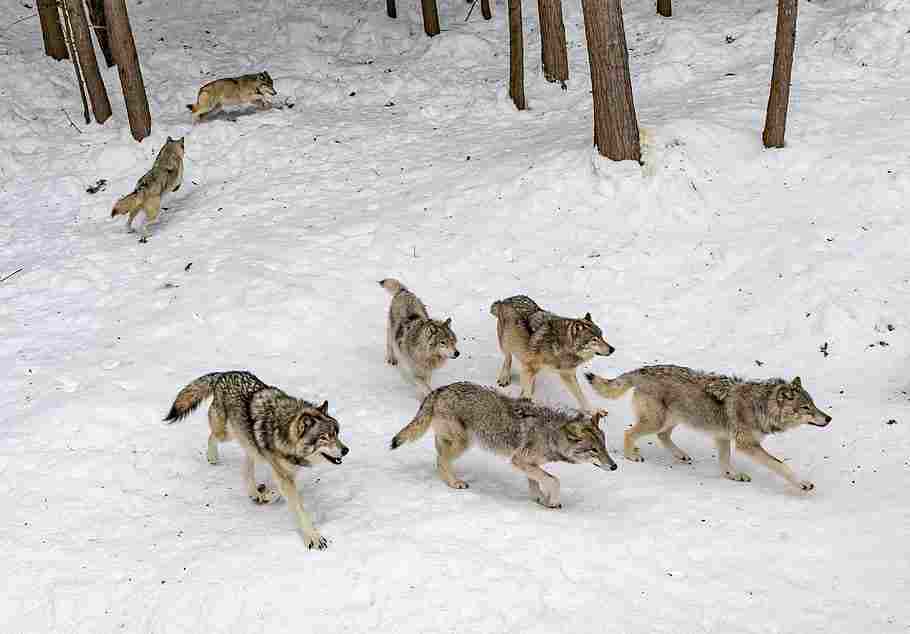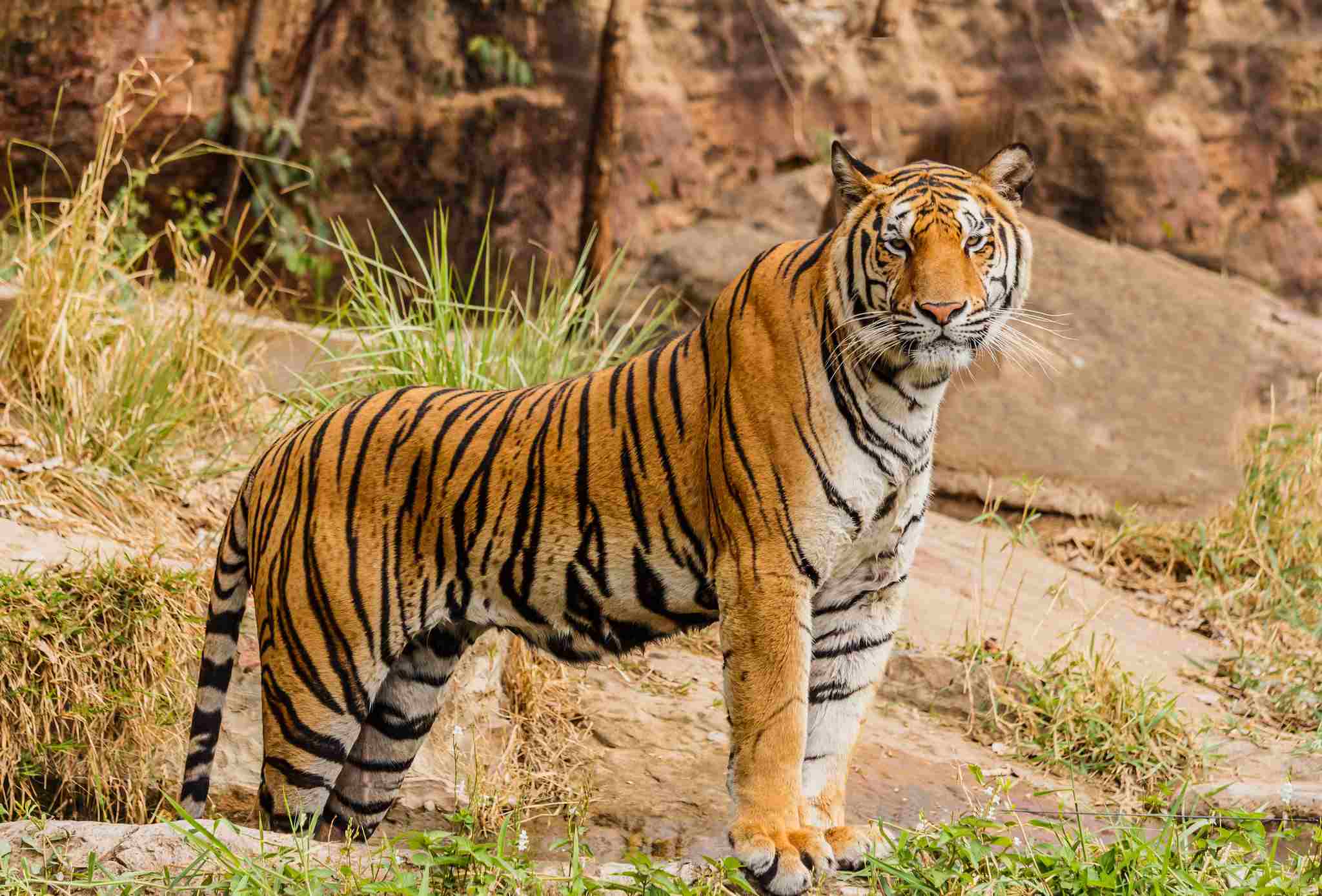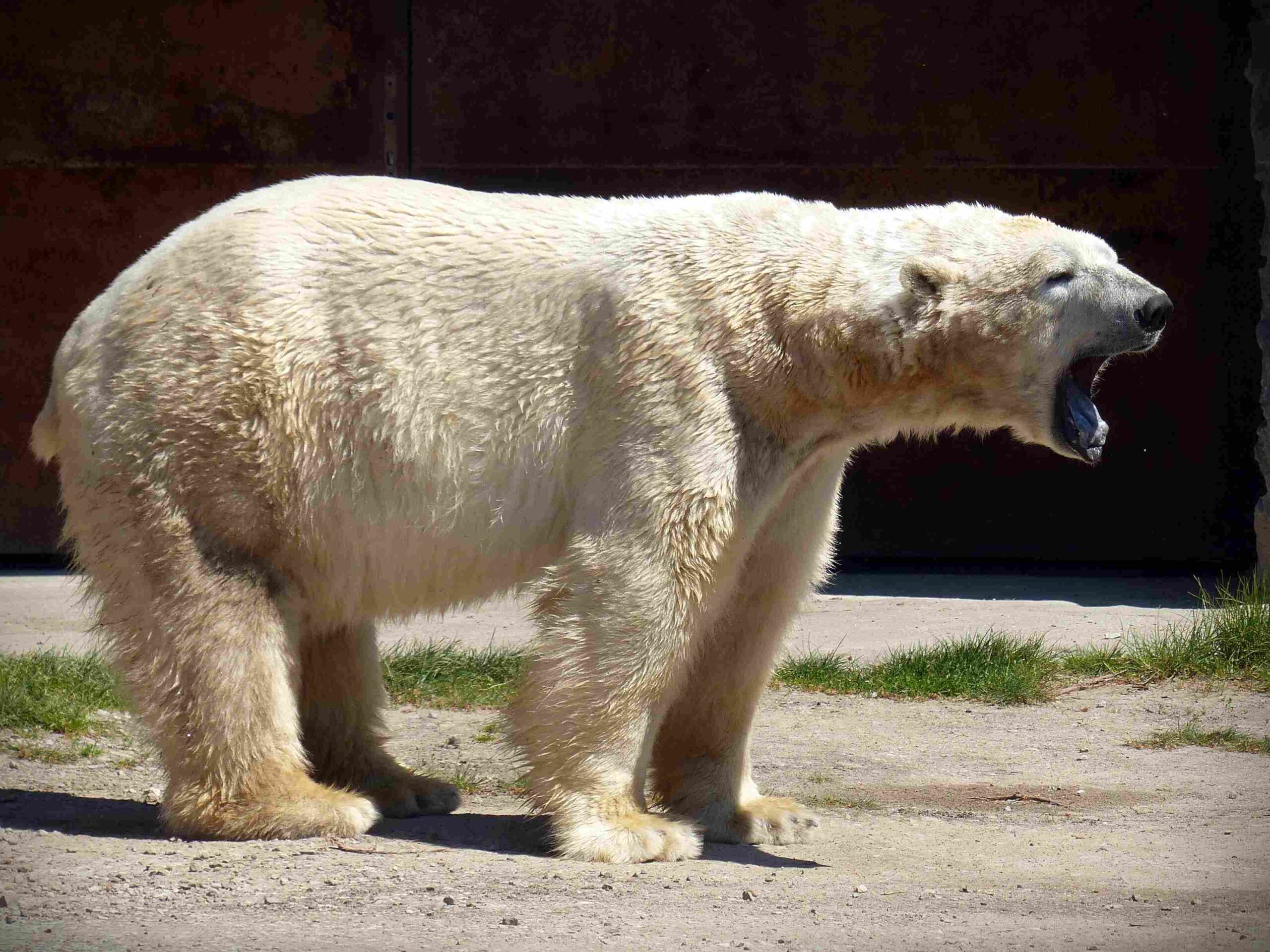Wolf Vs Tiger Size, Weight, Ecological Comparison
On average, a tiger will overpower, kill, and perhaps feed on a wolf, as it is a much heavier, stronger and larger apex predator.
While a tiger’s size, weight, strength, and speed give it a clear advantage over a wolf, it’s important to consider other factors when comparing these animals. Taxonomy, appearance, and overall physical capacity are key aspects to explore. Additionally, habitat, lifespan, behavior, and reproduction play a significant role in understanding their ecological differences.
Key Outcomes
*Biological Comparison
The wolf and the tiger are not biologically related in terms of genus and species. While both are mammals and belong to the class Mammalia, they belong to different families and orders. The wolf, scientifically known as Canis lupus, belongs to the family Canidae and the order Carnivora. On the other hand, the tiger, scientifically known as Panthera tigris, belongs to the family Felidae and the order Carnivora as well.
*Size and Weight Comparison
When it comes to size, the tiger is larger than the wolf. Tigers can reach lengths of up to 10 feet and stand at a shoulder height of around 3.3 feet. On the other hand, wolves typically measure around 4.5 to 6.5 feet in length and have a shoulder height of about 2.6 to 3.3 feet.
In terms of weight, tigers are much heavier than wolves. Adult male tigers can weigh between 400 to 600 pounds, while adult female tigers weigh around 220 to 350 pounds. In comparison, adult male wolves weigh between 70 to 110 pounds, while adult female wolves weigh around 50 to 85 pounds.
*Physical Capability Comparison
When it comes to physical capability, the tiger has the advantage over the wolf. Tigers are known for their immense strength and power, which allows them to overpower and kill their prey. On the other hand, while wolves are skilled hunters, they rely more on their pack dynamics and teamwork rather than sheer strength. In a one-on-one confrontation, the tiger’s strength and size would likely overpower the wolf.
1). Taxonomy
The taxonomy of wolves and tigers reveals interesting similarities and differences between the two species. Wolves belong to the genus Canis and the species lupus, while tigers belong to the genus Panthera and the species tigris. Despite belonging to different genera and species, both wolves and tigers are classified under the family Felidae, which includes all the big cats.
In terms of their physical characteristics, wolves and tigers have distinct differences. Wolves are known for their muscular build and compact bodies, with a height at the shoulder ranging from 26 to 32 inches. On the other hand, tigers are larger and more robust, with a shoulder height of around 3 to 3.5 feet. Tigers also have a longer body length, measuring up to 10 feet, compared to the average length of a wolf, which is around 4 to 5 feet.
While both species are carnivorous predators, their hunting techniques and social structures differ. Wolves are highly social animals that live and hunt in packs, relying on teamwork and coordination to bring down their prey. Tigers, on the other hand, are solitary hunters, relying on their strength and stealth to ambush and overpower their prey.
2). Appearance
The appearance of wolves and tigers showcases their unique adaptations and physical characteristics. Both species have distinct features that contribute to their survival in their respective habitats.
Starting with their coats, wolves have a thick, double-layered fur that provides insulation and protection from harsh weather conditions. Their fur can vary in color, ranging from gray to brown, and even white in some Arctic subspecies. This camouflage allows them to blend into their surroundings and remain undetected while hunting or evading predators.
On the other hand, tigers have a striking coat pattern consisting of orange or reddish-orange fur with dark stripes. This pattern, known as camouflage, helps them blend into the tall grasses and dense vegetation of their habitats, such as forests and grasslands. The combination of their coloration and stripes allows tigers to effectively stalk and ambush their prey without being easily spotted.
In terms of stature and build, wolves have a more compact and muscular body structure. Their strong legs and agile bodies enable them to navigate various terrains, including forests and snowy landscapes. Tigers, on the other hand, have a more robust and elongated body, with powerful limbs and a flexible spine that aids in their stealthy movements and pouncing abilities.
3). Size
When comparing the size of wolves and tigers, we need to consider their total body length and height at the shoulders. Wolves typically measure between 4.5 to 6.5 feet in length, with an additional 1 to 1.5 feet for their tail. At the shoulders, they stand at an average height of 2.5 to 3.5 feet. Tigers, on the other hand, are significantly larger. They can reach lengths of 8 to 10 feet, with an additional 2.5 to 3.5 feet for their tail. At the shoulders, tigers stand at an impressive height of 3 to 3.5 feet.
The size difference between wolves and tigers is evident, with tigers being much larger in both length and height. This size advantage gives tigers a greater presence and intimidation factor in their habitats. It also allows them to take down larger prey, such as deer and wild boar, with relative ease. Wolves, although smaller in size, compensate with their pack hunting strategy, relying on teamwork and coordination to bring down their prey.
4). Weight
When comparing the weight of wolves and tigers, it is clear that tigers are significantly heavier. Adult male tigers can weigh anywhere between 400 to 700 pounds, with some exceptional individuals reaching weights of up to 900 pounds. Female tigers are slightly smaller, weighing between 220 to 370 pounds. On the other hand, adult male wolves typically weigh between 70 to 110 pounds, while females weigh slightly less, ranging from 50 to 85 pounds.
The weight difference between wolves and tigers is substantial, with tigers outweighing wolves by a large margin. This additional weight gives tigers a distinct advantage when it comes to overpowering their prey and defending their territory. Tigers’ sheer size and strength allow them to bring down larger animals, such as buffalo and gaur, which would be impossible for wolves to tackle alone.
However, it is important to note that wolves compensate for their smaller size and weight through their pack hunting behavior. By working together as a cohesive unit, wolves are able to take down larger prey and ensure the survival of the entire pack. This cooperative hunting strategy is a testament to the intelligence and adaptability of wolves, allowing them to thrive in a variety of habitats.

5). Speed and Agility
When comparing the speed and agility of wolves and tigers, it is evident that both animals possess impressive physical capabilities. Tigers are known for their incredible speed, capable of reaching speeds up to 40 to 50 miles per hour in short bursts. This agility allows them to swiftly chase down their prey and make quick turns while hunting. On the other hand, wolves are also highly agile and can reach speeds of up to 35 miles per hour. Their nimbleness enables them to navigate through various terrains, including forests and snowy landscapes, with ease.
The speed and agility of both wolves and tigers play a crucial role in their hunting strategies. Tigers rely on their speed to ambush their prey, utilizing their agility to quickly close the distance and deliver a powerful attack. Wolves, on the other hand, employ their speed and agility in their pack hunting tactics. By coordinating their movements and utilizing their agility, they can outmaneuver and surround their prey, increasing their chances of a successful hunt.
While tigers may have a slight advantage over wolves in terms of top speed, wolves compensate with their exceptional teamwork and coordination. Their ability to work together as a pack enhances their hunting efficiency and allows them to take down larger prey.
6). Bite Force
When comparing the bite force of wolves and tigers, it is important to consider the psi (pounds per square inch) measurement. The bite force of an animal is a crucial factor in determining its hunting and feeding capabilities.
Tigers have an incredibly powerful bite force, with an average psi ranging from 1,000 to 1,200. This allows them to deliver a devastating bite, capable of crushing bones and overpowering their prey. Their strong jaws and sharp teeth enable them to take down large herbivores with relative ease.
On the other hand, wolves also possess a formidable bite force. While their psi is lower compared to tigers, ranging from 400 to 500, it is still strong enough to inflict significant damage. Wolves rely on their bite force to immobilize and subdue their prey, targeting vital areas such as the neck or throat.
In a direct confrontation between a wolf and a tiger, the tiger’s superior bite force gives it an advantage. However, it is important to note that bite force alone does not determine the outcome of a fight. Factors such as size, agility, and hunting strategies also play a significant role.
7). Overall Physical Capacity (Which is Stronger?)
On average, tigers are much stronger than wolves, owing to their superior weight, size, and predatory attributes.
When comparing the overall physical capacity of a tiger and a wolf, it is important to consider various factors beyond just size and weight. While the tiger does have a size and weight advantage over the wolf, there are other aspects to consider.
Size and weight do play a significant role in determining an animal’s strength. Tigers are larger and heavier than wolves, with adult males weighing up to 600 pounds and measuring around 10 feet in length. In comparison, wolves typically weigh between 70 to 120 pounds and measure around 4 to 5 feet in length. This size difference gives tigers an advantage in terms of raw power and physical presence.
However, it is important to note that wolves are highly agile and possess remarkable endurance. They are built for long-distance running and have the ability to cover great distances in pursuit of their prey. Wolves also have a strong sense of teamwork and coordination, allowing them to take down larger prey through strategic hunting strategies.
On the other hand, tigers are solitary hunters and rely on their strength and stealth to ambush their prey. Their powerful muscles and sharp claws enable them to bring down large herbivores with ease. Tigers are also known for their exceptional swimming ability, which adds to their overall physical capacity.
8). Habitat
Wolves are highly adaptable and can be found in a variety of habitats, including forests, tundra, grasslands, and mountains. They have a wide geographic range, spanning across North America, Europe, Asia, and even parts of Africa. Wolves are known for their ability to thrive in diverse environments, making them one of the most widely distributed land mammals.
On the other hand, tigers are primarily found in dense forests and grasslands of Asia, particularly in countries like India, Russia, and Indonesia. They require a habitat with ample cover for hunting and stalking their prey. Tigers are highly territorial animals and require large home ranges to meet their needs for food and shelter.
In terms of habitat comparison, wolves have a broader range and can adapt to various ecosystems, while tigers are more specialized and restricted to specific regions. This difference in habitat preference is influenced by their evolutionary history and ecological requirements.
9). Lifespan
When comparing the lifespan of wolves and tigers, it is important to consider various factors that influence their longevity. Wolves typically have a lifespan of 6 to 8 years in the wild, although some individuals have been known to live up to 13 years. On the other hand, tigers have a longer lifespan, with individuals in the wild living for around 10 to 15 years. However, tigers in captivity can live up to 20 years or more.
The difference in lifespan can be attributed to several factors. Wolves face numerous challenges in the wild, including competition for resources, predation, and disease. These factors can significantly impact their survival and overall lifespan. Tigers, on the other hand, are apex predators and face fewer threats in their natural habitat. They have fewer natural predators and are less susceptible to diseases, allowing them to live longer.
It is worth noting that the lifespan of both wolves and tigers can vary depending on the availability of food, habitat quality, and human interference. Factors such as poaching, habitat loss, and conflicts with humans can significantly reduce the lifespan of both species.
10). Behavior
In terms of feeding, wolves are social animals that hunt in packs, relying on teamwork and coordination to bring down prey. They are known for their cooperative hunting strategies, which involve chasing and surrounding their target. Tigers, on the other hand, are solitary hunters that rely on stealth and ambush tactics to catch their prey. They are highly skilled at stalking and pouncing on their unsuspecting victims.
Aggression is another behavior that differs between wolves and tigers. Wolves are known for their territorial behavior and will defend their pack and territory from intruders. They use vocalizations, such as growls and howls, to communicate and establish dominance. Tigers, on the other hand, are solitary animals that mark their territory with scent markings and vocalizations. They are highly territorial and will fiercely defend their territory from other tigers.
In terms of social behavior, wolves are highly social animals that live in packs with a well-defined hierarchy. They engage in social bonding activities, such as grooming and playing, which help to strengthen their pack cohesion. Tigers, on the other hand, are solitary animals that prefer to live and hunt alone. They have larger home ranges and do not form social groups like wolves.
When it comes to parenting, both wolves and tigers exhibit strong parental care. Wolf packs have a complex social structure, and all members of the pack contribute to the care and upbringing of the young. Tigers, on the other hand, are solitary mothers that raise their cubs alone. They provide protection, food, and teach their cubs essential hunting skills until they are old enough to fend for themselves.
While wolves exhibit social behaviors and cooperative hunting strategies, tigers are solitary hunters with territorial behaviors. Both species display unique parenting behaviors that ensure the survival of their young.

11). Reproduction
Wolves and tigers have distinct reproductive strategies. Wolves are viviparous, meaning they give birth to live young. The female wolf undergoes a gestation period of around 63 days before giving birth to a litter of pups. The size of the litter can vary but typically ranges from 4 to 6 pups. The entire pack participates in raising the young, with both parents and older siblings contributing to their care and protection.
On the other hand, tigers are also viviparous, giving birth to live cubs after a gestation period of approximately 100 days. A female tiger usually gives birth to a litter of 2 to 4 cubs, although larger litters have been recorded. Unlike wolves, tigers are solitary animals and the mother is solely responsible for raising and protecting her cubs. She provides them with nourishment, teaches them hunting skills, and ensures their survival until they are old enough to venture out on their own.
When comparing the reproductive strategies of wolves and tigers, it is evident that both species have adapted to their respective social structures and ecological niches. Wolves rely on their pack dynamics to raise their young, while tigers rely on their solitary nature to ensure the survival of their cubs. These strategies have allowed both species to successfully reproduce and maintain their populations in their respective habitats.
12). Danger Posed to Humans
Tigers are more dangerous to humans than wolves, because they are larger, stronger, heavier, less predictable, and more predatory.
When considering the danger posed to humans by wolves and tigers, it is important to examine their behavior towards human settlements and their aggression towards humans.
Wolves are known to avoid human settlements and generally do not pose a significant threat to humans. However, there have been rare instances where wolves have come into close proximity to human settlements, especially in areas where their natural habitat has been encroached upon. In such cases, it is important for humans to exercise caution and take necessary precautions to avoid any potential conflicts.
On the other hand, tigers have been known to exhibit aggression towards humans, especially in situations where they feel threatened or their territory is invaded. Tigers are powerful predators and encounters with humans can be dangerous. It is crucial for individuals to be aware of the precautions to take if they encounter a tiger in the wild, such as maintaining a safe distance, avoiding sudden movements, and slowly backing away without turning their back on the animal.
In terms of the rate of human deaths caused by wolves and tigers, it is important to note that both species have been involved in attacks on humans. However, the number of fatalities caused by tigers is generally higher compared to wolves. This can be attributed to the solitary nature and territorial behavior of tigers, which can lead to more frequent and potentially fatal encounters with humans.

13). Conservation Status
For wolves, the main threats to their survival in the wild include habitat loss, human persecution, and the decline of their prey populations. As human settlements expand and encroach upon their natural habitats, wolves often face displacement and reduced access to food sources. Additionally, they are sometimes targeted by humans due to conflicts with livestock or perceived threats to human safety. These factors contribute to the decline in wolf populations and highlight the importance of conservation efforts to protect their habitats and promote coexistence with humans.
Tigers, on the other hand, face similar challenges but on a larger scale. Habitat loss, poaching for their valuable body parts, and human-wildlife conflicts are the main threats to their survival. As their natural habitats shrink and become fragmented, tigers struggle to find suitable territories and prey.
Poaching for the illegal wildlife trade poses a significant threat, driven by the demand for tiger bones, skins, and other body parts. Conservation initiatives focusing on habitat protection, anti-poaching efforts, and community engagement are crucial for the long-term survival of tigers.
Both wolves and tigers are facing significant challenges in terms of their conservation status. Protecting their habitats, addressing human-wildlife conflicts, and combating illegal wildlife trade are essential for ensuring the survival of these iconic species in the wild.

Conclusion
I). SIMILARITIES
In terms of similarities, both wolves and tigers are top predators in their respective ecosystems. They play crucial roles in maintaining the balance of their habitats by regulating prey populations and preventing overgrazing. Additionally, both species are highly adaptable and have successfully coexisted with humans in certain areas.
However, their similarities extend beyond their ecological roles. Wolves and tigers are both social animals, living in structured groups that facilitate hunting and provide protection for their young. These social structures also contribute to their overall success as apex predators.
II). DIFFERENCES
While wolves and tigers share some similarities, there are also notable differences between the two species. One key difference lies in their physical characteristics. Wolves are known for their exceptional endurance and teamwork, allowing them to take down large prey through coordinated hunting strategies.
On the other hand, tigers are solitary hunters with incredible strength and agility, capable of bringing down prey much larger than themselves. Another significant difference is their geographic distribution. Wolves are found in various habitats across North America, Europe, and Asia, while tigers are primarily found in Asia, with different subspecies occupying specific regions.









